
Alessandro Giuseppe Antonio Anastasio Volta was an Italian physicist and chemist who was a pioneer of electricity and power and is credited as the inventor of the electric battery and the discoverer of methane. He invented the voltaic pile in 1799, and reported the results of his experiments in 1800 in a two-part letter to the president of the Royal Society. With this invention Volta proved that electricity could be generated chemically and debunked the prevalent theory that electricity was generated solely by living beings. Volta's invention sparked a great amount of scientific excitement and led others to conduct similar experiments, which eventually led to the development of the field of electrochemistry.
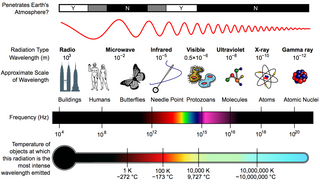
The electromagnetic spectrum is the spectrum of electromagnetic radiation, ranging over a domain of frequencies and their respective wavelengths and photon energies.

Infrared is electromagnetic radiation (EMR) in the spectral band between microwaves and visible light. It is invisible to the human eye. IR is generally understood to encompass wavelengths from around 750 nm to 100 μm.

A galvanometer is an electromechanical measuring instrument for electric current. Early galvanometers were uncalibrated, but improved versions, called ammeters, were calibrated and could measure the flow of current more precisely.
Timeline of electromagnetism and classical optics lists, within the history of electromagnetism, the associated theories, technology, and events.

A thermographic camera is a device that creates an image using infrared (IR) radiation, similar to a normal camera that forms an image using visible light. Instead of the 400–700 nanometre (nm) range of the visible light camera, infrared cameras are sensitive to wavelengths from about 1,000 nm to about 14,000 nm (14 μm). The practice of capturing and analyzing the data they provide is called thermography.
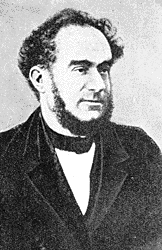
Carlo Matteucci was an Italian physicist and neurophysiologist who was a pioneer in the study of bioelectricity.
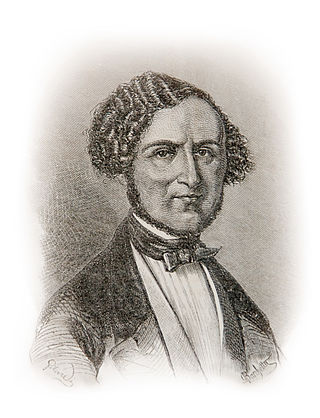
Macedonio Melloni was an Italian physicist, notable for demonstrating that radiant heat has similar physical properties to those of light.

Jean Charles Athanase Peltier was a French physicist. He was originally a watch dealer, but at the age of 30 began experiments and observations in physics.

Camillo Rondani was an Italian entomologist noted for his studies of Diptera.

Louis Bertrand Castel was a French mathematician born in Montpellier, who entered the order of the Jesuits in 1703. Having studied literature, he afterwards devoted himself entirely to mathematics and natural philosophy. After moving from Toulouse to Paris in 1720, at the behest of Bernard de Fontenelle, Castel acted as the science editor of the Jesuit Journal de Trévoux.

Marc-Auguste Pictet was a Swiss scientific journalist and experimental natural philosopher.

Jules Célestin Jamin was a French physicist. He was professor of physics at École Polytechnique from 1852 to 1881 and received the Rumford Medal in 1858 for his work on light. He improved Brewster's inclined interference plates with the development of the Jamin interferometer.
Giuseppe Domenico Botto was an Italian physicist.
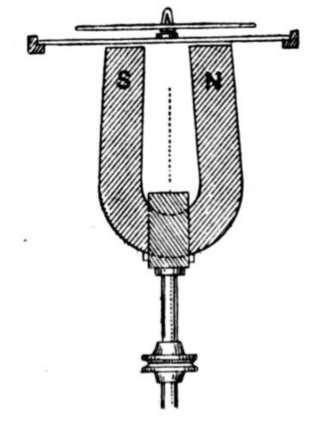
Arago's rotations is an observable magnetic phenomenon that involves the interactions between a magnetized needle and a moving metal disk. The effect was discovered by François Arago in 1824. At the time of their discovery, Arago's rotations were surprising effects that were difficult to explain. In 1831, Michael Faraday introduced the theory of electromagnetic induction, which explained how the effects happen in detail.
Gustavo Carulli, called Gustave Carulli in French publications, was a composer, musician and music teacher.

The Reale Museo di Fisica e Storia Naturale was an Italian museum founded on 22 February 1775 in Florence that survived until 1878, when its collections were split up in various Florentine museums.
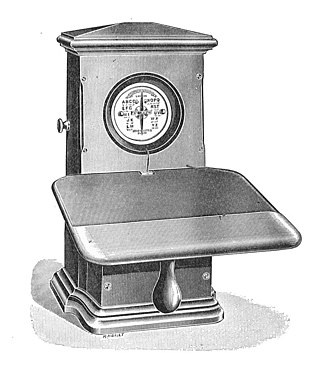
A needle telegraph is an electrical telegraph that uses indicating needles moved electromagnetically as its means of displaying messages. It is one of the two main types of electromagnetic telegraph, the other being the armature system, as exemplified by the telegraph of Samuel Morse in the United States. Needle telegraphs were widely used in Europe and the British Empire during the nineteenth century.
Luigi Ferdinando Casamorata was an Italian composer and music critic.

Pierre-Louis Guinand (1748–1824) was a Swiss lens maker. who in the late 1700s came up with a breakthrough for making better quality and larger glass, and in time went on to teach a young Fraunhofer at Joseph von Utzschneider's (1763-1840) glassworks, and eventually started his own optical glass works. Guinand would supply glass for the Paris Observatory telescopes and also Cauchoix. He was a pioneer in the manufacture of optical glass for microscopes, telescopes, glasses and other optical instruments.


















